- Administrator
- Albums and Singles
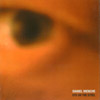 Excellent use of dynamics is what allows this album to succeed. Topping 70 minutes, Eye on the Steel ranges from sparse, eerie crackling sounds to massive bursts of pulsating drones. There are 11 untitled tracks, but the set sounds as if it is one piece, with indexes placed at points at which there are major shifts in sound.
Excellent use of dynamics is what allows this album to succeed. Topping 70 minutes, Eye on the Steel ranges from sparse, eerie crackling sounds to massive bursts of pulsating drones. There are 11 untitled tracks, but the set sounds as if it is one piece, with indexes placed at points at which there are major shifts in sound.
Track One builds up to a crescendo of swarming noise over a steady pulse. Menche uses this pulse to build tension without the track sounding rhythmic at all. Although many of the tracks are long, they need to be in order for layers of sound to slowly accumulate. On Track Six minimal rhythmic popping sounds are gradually overtaken by short, sharp, bass-heavy rhythms and loud piercing drones until the track is in a completely different territory from where it started. It is impressive that Menche has created so many different moods out of what seems to be the same sound sources. Buzzing sounds, extremely shrill tones that sound like sirens or alarms and many different crackling sounds are used on all of these tracks in different ways. The same static sounds that create a push and pull tension on Track Two are used much more sparsely on Track Six, creating a whole different, almost calming atmosphere. Track Five's whirling tones blended so effortlessly with the wind rustling outside my windows that I had to check to see if the wind sounds were coming from the CD or from outside. Menche's strength is that he makes the most out of the few sounds he chooses. Elements that are usually used in techno, such as the clicking, shuffling sounds that dance from speaker to speaker in Track Six, are interesting because he has removed them from their usual context. By placing these sounds among whirling, high pitched drones he references both minimal techno and abstract drone based music, while the result sounds like neither. The relatively quiet crackle of tracks seven, eight and nine make the tenth track sound all the more powerful, with its return to the noisy qualities of the first track. Eye on the Steel required more than one listen for me to catch all of the nuances Menche has used to create its shifting atmospheres.
samples:
 
Read More
- Creaig Dunton
- Albums and Singles
 Mark McGee, formerly of To Kill A Petty Bourgeoisie, has partnered up with a new female vocalist, Nicole Tollefson, to follow the path he pioneered in his previous band, combining harsh, noisy electronics and guitar with pure, delicate female vocals to excellent effect, although it seems that the harsher end of the spectrum has been reigned in somewhat.
Mark McGee, formerly of To Kill A Petty Bourgeoisie, has partnered up with a new female vocalist, Nicole Tollefson, to follow the path he pioneered in his previous band, combining harsh, noisy electronics and guitar with pure, delicate female vocals to excellent effect, although it seems that the harsher end of the spectrum has been reigned in somewhat.
Where TKAPB would drift into especially raw electronic territory, McGee keeps that in check here, but never becoming too dull or predictable.The sparse, messy backing and over-driven bass thud of "Ocean" is by no means serene, especially paired with Tollefson's delicate, high pitched vocals.The wordless opening vocals of "We Give and Give and You Take and Take and Take and Take" and distant percussion are especially airy, even if it is mucked up brilliantly with scattershot, industrial tinged rhythms as the piece goes on.
On "Teratoma" and "Don't Be Mad at Me," a bit of McGee's harsher edge comes out, the former initially propelled by junky percussion, but then throws out a good helping of distorted noise outbursts, balancing between chaos and purity before allowing the noise to win at the end.The latter is the longest track here, and uses the extended duration to build jerky rhythms and dramatic vocals from an initially textural undercurrent.Here especially the juxtaposition of ugly and beautiful is the most obvious.
The short "Lungs" is mostly Tollefson's voice, layered and looped into a hazy piece of abstraction that is comparatively more stripped down and simple compared to the other songs on here.The closing "Edmund" goes in a different direction, keeping the up-front voices but bringing in identifiable guitar and almost jazz-laden drums, but still throws in a few outbursts of vacuum cleaner noise.
At six tracks and a little under a half-hour, it's hard to see how Father You See Queen with stand up next to To Kill A Petty Bourgeoisie, especially since there are some notable similarities between the two projects.However, those similarities include McGee's brilliant balancing of dissonant noise and delicate, beautiful vocals, so they’re definitely on the right track.
Read More
- Creaig Dunton
- Albums and Singles
 Following up their acclaimed debut LP The Persistence of Meaning, this Brooklyn duo of Joshua Convey and Luke Krnkr serve up another release of dark, mysterious murk that channels krautrock as much as harsh noise. With an A side that goes for more musical elements, and a harsher, disjointed B side, the combination works wonderfully.
Following up their acclaimed debut LP The Persistence of Meaning, this Brooklyn duo of Joshua Convey and Luke Krnkr serve up another release of dark, mysterious murk that channels krautrock as much as harsh noise. With an A side that goes for more musical elements, and a harsher, disjointed B side, the combination works wonderfully.
The A side begins with "Go Forth and Die," initially a slow, brittle drum machine pulse and barely controlled sharp, high end feedback that may or may not be a heavily treated guitar.Buried, almost hidden vocals eventually arise, reshaping the piece with subtle, but noticeable changes.The track perfectly segues into "Roses in the Snow", which is a more ambient piece collected from the disintegrated fragments of the previous one.With its looped, mantra-like structure and continued oddly treated guitar, there's definitely more than a passing resemblance to mid-period Main, with a few extra layers of grime added.
On the flip side, the long "NoWhere" shows its dissonant character immediately, with what sounds like a looped computer data tape run through distortion.Slowly, the rhythmic loop becomes more and more complex, with a buzzsaw guitar line and harsher, abstract noise piled atop.It’s a wall of chaotic, glorious noise that stretches out for nearly 15 minutes, while never losing that pulsing lurch below it.
With the first half of this tape demonstrating the duo's more musical exploits, and the other letting the feedback and noise fly, the balance between the two is perfectly struck.The first two tracks especially come across brilliantly with its obscured vocals and melodic throb, but the noisier piece is no slouch either.For a project that's still relatively young, Ithi has already proven themselves quite ably.
Read More
- Administrator
- Albums and Singles
 In an unexpected move, Front 242's Daniel Bressanutti has rejoined former member Dirk Bergen (who left soon after the Geography album) to start this new project, heavily rooted in classic analog synth technology and an apparent love of the Blade Runner soundtrack. While being spread across two discs comes across as excessive, there's still a good album’s worth of tracks in here.
In an unexpected move, Front 242's Daniel Bressanutti has rejoined former member Dirk Bergen (who left soon after the Geography album) to start this new project, heavily rooted in classic analog synth technology and an apparent love of the Blade Runner soundtrack. While being spread across two discs comes across as excessive, there's still a good album’s worth of tracks in here.
With "Marcel Proust (VLEGM)" leading off the first disc with sweeping synth strings and a clipped, resonating bass sequence, NBN sets the mood early on, as a cinematic album that manages to be both understated and bombastic at the same time."Silenzio Monofoniche"'s haunting, echoing synth passages are shaped into creaking, shrill layers of sound that are eventually met with a sequenced bassline, though structurally it’s more disjointed than most on here.
"Mooglish" leads off with the rhythmic throb, but with higher register synth bleeps and lush strings.A healthy bit of dissonance kicks in later on, never too much but a clear and powerful use of contrasting sounds."S2cond S7ven" stands out with its introduction of mangled, inhuman voices on gently rolling synth pads, again creating a balance of dissonance and melody that’s pretty vibrant overall.
With its percussive thump and heavily bass-driven structure, "Puzzle Cosmique" is mostly a rhythmic piece, but enshrouded by an almost formless snowdrift of synths, much like the long "Mass", which takes its time locking into its taut, rhythmic structure.It especially is quite cinematic, but far too active and dynamic to work as film score music, because it simply commands too much attention.
The other longer piece on the album, the clumsily named "CK a) 242 Hurtz b) Vorspiel" is probably the one that works the best on here.Opening with deep, dissonant bass layers and shrill, almost feedback like synth outbursts, it’s the bleakest and most abstract of the pieces, and the icy synths are just the icing on the cake.While none of the other songs here would fit into some trite new age mold, this one especially resists that label.
Nothing But Noise manages to embrace a sound that’s deeply rooted in the late 1970s/early 1980s, but without sounding overly dated or cliché.There is a distinct similarity to Vangelis' Blade Runner score, but it is more inspiration than duplication.The constant use of synth pads and sequenced bass lines does cause one track to bleed too much into the other, but having too much of a good thing isn't necessarily a problem.
samples:
 
Read More
- Administrator
- Albums and Singles
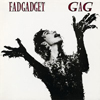 For the final Fad Gadget album, Frank Tovey went to Berlin, home of touring mates Einstürzende Neubauten, and once again sought to expand the sound beyond the synth domination of prior releases. Unsurprisingly, the result incorporates much more abrasive percussive sources, but Tovey remained within his element of entertainer/commentator role when it came to the subject matter at hand.
For the final Fad Gadget album, Frank Tovey went to Berlin, home of touring mates Einstürzende Neubauten, and once again sought to expand the sound beyond the synth domination of prior releases. Unsurprisingly, the result incorporates much more abrasive percussive sources, but Tovey remained within his element of entertainer/commentator role when it came to the subject matter at hand.
Gareth Jones (credited as Tonmeister) was at the controls along with Tovey. Jones had previously recorded records with Tuxedomoon, Neonbabies, and The Lost Jockey, but it was his work with Depeche Mode on Construction Time Again that probably mattered the most to Tovey and Mute. Jones had effectively brought everything and the kitchen sink onto Depeche Mode's third album the previous year and Gag, too, is known for its creative incorporation of unconventional sound sources framed within the 3-minute pop template.
"Ideal World" launches the album with a fury. Metallic percussion and angular guitar work rush in like a tidal wave while Tovey barks out a simple song about dreaming in both the physical sense and the ideologic sense. "Collapsing New People" is the album's big hit, however, and it has all the key ingredients: a catchy hook, singable lyrics, and plenty of sass. The opening metallic rhythm is provided by an old letterpress while the title is a play on Einstürzende Neubauten's band name and the song subject is Frank's interpretation of the post-punk post-industrial goth scene in Berlin. The irony is that 28 years later people still swoop to this tune in club nights named after Joy Division songs, dressed like a corpse.
Perhaps it was this scene that Tovey was getting sick of, ushering in his decision to end Fad Gadget and record under a different style under his own name. It makes sense to me, at least. Frank Tovey was an entertainer: he is pictured on the cover of this album tarred and feathered (by Anton Corbijn once again). He continued to dress up on stage and get physically involved (despite being sent home early on the previous tour in plaster casts). At The Loft in Berlin, Tovey grabbed an air conditioning vent in the ceiling and the fake ceiling collapsed onto the stage while Neubauten, on the same bill, left the stage in splinters following some power tool action but the audiences in 1984 didn't show much excitement any more. Dressing in black and moping was the way things went, even if the audience liked you.
From there the energy of the album tapers off with the lullaby-esque "Sleep," as Tovey essentially sings some trite advice to his son, who's voice is featured throughout.As the tempo picks back up again, I'm simply not won over by the melodies and words of most of the remaining songs. Perhaps Frank wasn't as convincing as he had been on prior albums or perhaps I just don't connect with the songs. "Speak To Me" sort of reminds me of the Bowie of the '80s that collects dust in the collection while "Jump" is like one of those white musician dabblings at reggae/dub that don't completely work.
"One Man's Meat" was the album's other single and while I never skip this song when it comes on, it has never left a great impression on me."Ad Nauseam" closes the album with a sort of surreal piano, percussion, and string melody while a violin loop a'la Psycho forms the rhythmic skeleton from start to finish. It's at this point, Tovey's final song as Fad Gadget, where he admits he chokes "on the gag," but doesn't "get the joke." It ends in a digital breakdown as the tape loop slows down and the digital samples and guitar whine all pile up. The next music to come out of Frank Tovey was his debut under his own name in 1986, Snakes and Ladders, of which I have tried to listen to many times but still have no interest.
Perhaps some of these songs needed to be experienced live to actually feel the energy, on record, however, I don't connect nearly as much as I did to the earlier recordings. On the other hand, meybe Neubauten should have actually been recruited to Gag a much noisier affiar but as Snakes and Ladders somewhat illustrates, it wasn't in Frank's interest.
PS: Mute, if you're reading this, it's time to remaster these albums properly as well as those singles and B-Sides without trying pass off vinyl rips with dreadful EQ (yes I'm referring to that "Best Of" compilation).
samples:
Read More
- Administrator
- Albums and Singles
 This live concert in, no surprise, Rome sees David Tibet joined by Maja Elliott on piano and John Contreras on cello. Performed around the same time as Tibet was creating the first installment in his Aleph trilogy. However, as the line up suggests, this was not the ferocious psychedelic rock that Current 93 were unleashing in the studio. Instead, the group play through a quiet, tender set of old favorites and (at the time) new compositions.
This live concert in, no surprise, Rome sees David Tibet joined by Maja Elliott on piano and John Contreras on cello. Performed around the same time as Tibet was creating the first installment in his Aleph trilogy. However, as the line up suggests, this was not the ferocious psychedelic rock that Current 93 were unleashing in the studio. Instead, the group play through a quiet, tender set of old favorites and (at the time) new compositions.
Beginning with a cover of Bill Fay’s "Time of the Last Persecution" (a staple of Current 93 live shows at the time), the mood is unsurprisingly apocalyptic for this performance. Tibet claims the song as his own and indeed the lyrics fit perfectly with his own exhaustive eschatological musings with spooky consonance. Running through a selection of new and old classics, including stupendously beautiful renditions of "Niemandswasser" and "Alone," the trio give their Italian audience something to remember.
The middle section is devoted to songs from the then forthcoming Black Ships Ate the Sky album. Stripped down compared to the studio versions or the live cuts found on Birdsong in the Empire, the songs sound here like a bridge between the delicate introspection of albums like Soft Black Stars and Sleep Has His House and the Aleph albums that would follow. While "Sunset" follows the same trajectory as the common acoustic guitar version, its sister "Black Ships Ate the Sky" is a very different song in this format. Elliott’s piano creates shafts of moonlight to act as spotlights for Tibet’s lyrics. It is every bit as ominous as the familiar heavy rock variations but feels like a completely new piece here.
The remainder of the set is given over to fan favourites like "A Sadness Song" and "A Gothic Love Song (for N.)" though I could have done without "Oh, Coal Black Smith" which I have never warmed to. However, one disagreement on the set list is no great upset for me. Especially not when there is such an enjoyable version of "The Bloodbells Chime" present and even "Oh, Coal Black Smith" has a fire to it which at least lifts it above its usual level.
While the performance itself is wonderful, the recording quality is not the best. And When Rome Falls sounds like it is sourced from an audience recording; at times the noise off stage, though hushed, is louder than Current 93. It is not the worst recording I have heard (and many of Current 93’s other live albums suffer from a similar problem) and I feel it would only keep a casual fan away. Considering I have yet to meet one of these mythical casual Current 93 fans, I imagine it will be of little consequence to those purchasing this album. Importantly, the group put their heart and soul into giving life to Tibet’s visions and that transcends all but the very worst recording techniques.
samples:
 
Read More
- Administrator
- Albums and Singles
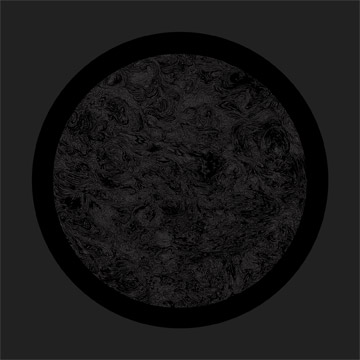 The latest album from Italy’s Architeuthis Rex sees them continuing to confound and entrance with their eclectic and heavy sound. More focused and unsettling than their debut album, here they once again plumb the depths to uncover a world of sounds which sound like they come from some bottomless fissure in the middle of the ocean. Taking as much inspiration from aquatic zoology (in its various forms) as from music, Urania is a fantastic exploration of concept and sound.
The latest album from Italy’s Architeuthis Rex sees them continuing to confound and entrance with their eclectic and heavy sound. More focused and unsettling than their debut album, here they once again plumb the depths to uncover a world of sounds which sound like they come from some bottomless fissure in the middle of the ocean. Taking as much inspiration from aquatic zoology (in its various forms) as from music, Urania is a fantastic exploration of concept and sound.
Starting with what sounds like the pulse of a sonar device, Architeuthis Rex kick off with "Spacemetal #1." Despite the name, this is neither space-y nor metallic but a jet-black plunge into a submarine environment. A creeping rhythm steadily dives lower and lower, the sounds increasing in pressure the further they lead me down. Suddenly the intense feeling of compression breaks as I drift into "Urania" where the music takes a loose and blissful turn. The extended tones and gentle lapping of the beat gives an almost amniotic mood while Francesca Marongiu’s vocals come through the darkness, comforting and familiar in these strange environment.
From here onwards, Architeuthis Rex cover a range of styles and approaches to their music like a Cambrian explosion of possible forms.; weird and wonderful shapes emerge, bug-eyed and fluorescent on "Esione." Elsewhere, the concrète and quasi-scientific sounds that make up the alien ambience of "Basiliscus" could be the soundtrack to a marine biology expedition, think of 4AD funding Jacques Cousteau to bring Luc Ferrari down in his submarine and that is somewhat close to the mark.
The album closes with "Spacemetal #2," a hitherto unprecedented bout of rocking out as the duo assume a guise not unlike Circle at their most psychedelic. Where the rest of the album feels like a descent, a voyage into an abyss, this final piece represents a return to the surface. Depressurizing and feeling like there might be a case of the bends imminent, this parting blast is at once triumphant and disorientating. This pair of words could easily describe Urania as a whole.
samples:
 
Read More
 The latest album from Italy's Architeuthis Rex sees them continuing to confound and entrance with their eclectic and heavy sound. More focused and unsettling than their debut album, here they once again plumb the depths to uncover a world of sounds which sound like they come from some bottomless fissure in the middle of the ocean. Taking as much inspiration from aquatic zoology (in its various forms) as from music, Urania is a fantastic exploration of concept and sound.
The latest album from Italy's Architeuthis Rex sees them continuing to confound and entrance with their eclectic and heavy sound. More focused and unsettling than their debut album, here they once again plumb the depths to uncover a world of sounds which sound like they come from some bottomless fissure in the middle of the ocean. Taking as much inspiration from aquatic zoology (in its various forms) as from music, Urania is a fantastic exploration of concept and sound.
- Administrator
- Albums and Singles
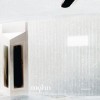 Mohn is the newest collaborative project for two German techno mainstays: Wolfgang Voigt (aka Studio 1, Mike Ink, Gas) and Jörg Burger (aka the Bionaut, Triola, the Modernist). The duo's debut self-titled album sticks to territory in between the steady, physical pulse of "Tiefental," from last year's Total 12 compilation, and "Manifesto," a damn near beat-less, immersive storm-cloud of ambience from Pop Ambient 2012.
Mohn is the newest collaborative project for two German techno mainstays: Wolfgang Voigt (aka Studio 1, Mike Ink, Gas) and Jörg Burger (aka the Bionaut, Triola, the Modernist). The duo's debut self-titled album sticks to territory in between the steady, physical pulse of "Tiefental," from last year's Total 12 compilation, and "Manifesto," a damn near beat-less, immersive storm-cloud of ambience from Pop Ambient 2012.
These two gentlemen have collaborated previously on at least one landmark techno album—and they remain close friends and Kompakt figureheads besides—but Mohn marks a significant step into new territory for both. Wolfgang Voigt, best known for his four albums as Gas around the turn of the century, has been making forward-thinking "minimal techno" music (sometimes more minimal, sometimes more techno) for over 20 years. Jörg Burger takes a more far-reaching approach to music: what he gains in pop appeal and sonic variety as compared to Voigt, he loses in formalist consistency of vision. (This is also the key reason that, although both are veterans of their craft, Voigt has maintained a more prominent critical profile.) Together, Burger and Voigt released one stone-cold masterpiece of 1990s electronic music: 1996's Las Vegas, credited to Burger/Ink, which found Voigt processing Burger's guitar and bass foundations into minimalist, long-form waves of sound.
Like John Talabot earlier this year, who switched monikers to signal a stylistic shift, making music under the Mohn name allows Voigt and Burger a chance to shed preconceptions—at least as much as possible—and strike out in an unexplored direction. It also indicates to fans that Mohn, their self-titled debut, is not meant to be heard as a strict follow-up to Las Vegas. (At Mohn's debut live performance in 2007, no material from Las Vegas was played.) Mohn is set apart by its blend of organic and mechanistic sounds, and the ways in which those sounds push and pull at each other, combine, clash, and interweave. Much of Voigt and Burger's previous music leans to the organic side, evoking images of natural phenomena, whereas the boldest tracks on Mohn sound cold, mechanized, made of steel, as if sound-tracking the Industrial Revolution—or the disappearance of a world without machines.
Not everything here has a discernible rhythm: the less forthright tracks lean toward the deep rumble of "Manifesto," Mohn's contribution to Pop Ambient 2012 a few months ago that more closely resembles Lull's dark-ambient '90s work than techno. Opener "Einrauschen" barely registers a pulse, whereas "Seqtor 88" splits the difference between stark, icy techno and the humid ambience of Voigt's Gas project. "Ambientôt" takes inspiration from Neu! and the German experimentalists of the '70s, with a faint krautrock stutter in its step. Most of the tracks come across like dance music on a morphine drip, reducing all rhythms to a slow-motion smear of thick ambient sound, with the organic/analog aspects of Mohn's music fighting for a gasp of air amongst the digital fog. There's something about self-titled songs that tend to encapsulate an artist's modus operandi (see Black Sabbath, Talk Talk, Slowdive, Angels of Light...) and "Mohn" is no different, folding a chilly, narcotic heartbeat into a mountain of delay, echo, looped ambience, and low-end punch.
The most memorable song on Mohn puts a darkly sexual twist on this sound: "Ebertplatz 2020" is barely techno—minimal in structure, but maximal in sound. It starts out with a glittering beat before a thick, gritty slab of extremely low-end bass frequency forces its way into the frame. Of all things, it takes on the same animalistic character as the throb and thrust of NIN's "Closer" (which I maintain is underrated, despite Reznor failing to make interesting music for the last 10-15 years). Burger and Voigt take a subwoofer-busting low-end frequency, then smear it and stretch it out drastically, combining physically jarring bass with the twinkling high-end and a sheet of ambient fuzz. This all conveys a very distinct mood without resorting to sexually suggestive lyrics or cliché: it sounds like two machines fucking, and wouldn't make a bad soundtrack for people doing the same thing. (Is it any coincidence that Mohn is pronounced "moan?")
All things considered, this is a stellar album. Mohn sounds incredibly immersive under a pair of headphones, to the extent of blocking all outside stimuli (earlier this week, I used it to drown out Katy Perry and "Party Rock Anthem" at a girls' birthday party at a roller-skating rink—no small feat). Much of the album can be a challenging listen at close distance, but has just enough melody and familiarity to hold interest, as well as enough ambience to fade into the background if so desired. Most impressively, though, Mohn is yet another feather in the caps of Burger and Voigt, who chose not to repeat their landmark work of 15 years past, but to look outside their bag of established tricks and again push the limits of what electronic, techno, and ambient music can be.
Samples:
Read More
- Administrator
- Albums and Singles
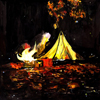
As much as I've always enjoyed Blackshaw's work, solo acoustic guitar albums have never quite been my favorite thing and I always wished he would record something else as ambitious and divergent as The Glass Bead's Game's "Cross" (or "Arc," for that matter).  However, James' recent nylon string compositions have caused me to stop thinking that.  Love is the Plan builds upon the promise of the similar Holly, but completely and dazzlingly eclipses it, striking the perfect balance between  blur-fingered virtuosity and poignant melody.  This is easily Blackshaw's best album to date.
I must confess that I did not fall instantly in love with this album–in fact, I initially found it exasperating for a number of disparate reasons.  The main one was that it essentially sounds like Holly II with a couple of digressions added to pad it out.  I also thought that some of the nylon string pieces had some overly polite/pastoral stretches and that the two piano pieces were a bit baffling and aesthetically chameleonic.  For example, "And I Have Come Upon This Place By Lost Ways" is a very unusual piece featuring vocals from Menace Ruine's Genevieve Beaulieu that sounds like Blackshaw may have overstretched his ambitions into a disorienting stylistic no-man's land that is equal parts jazz-via-Gershwin, torch song, medieval ballad, and spiritual.  Then, the admittedly beautiful closer ("The Snows are Melted, the Snows are Gone") goes an entirely different direction, opting for Romantic and melancholy Satie-esque simplicity.  I suppose they share the theme of bittersweet sadness, but I was disappointed at how straightforward James' piano playing was, given how adventurous he had been with "Arc" just a few short years ago.  Curiously, I still think all of the above are perfectly valid observations, but they are all superficial and became largely insignificant once I was fully immersed in the album.
Blackshaw devotes four of the six songs to lengthy, intricate, and churning cascades of finger-picked nylon string arpeggios, so they are basically the meat of the album.  James' playing has evolved enormously since the Holly EP though, almost to a Faustian, met-the-devil-at-the-crossroads degree.  Pieces like "We Who Stole the Dream" are quite simply on an entirely different level of depth, complexity, intensity, and emotion than I was expecting.  As I listened to Love is the Plan more and more, I began to realize that almost every song on the album boasted at least one incredibly poignant or beautiful hook that I loved.  That epiphany, though seemingly minor, completely changed how I listened to the album–instead of focusing on thoughts like "ugh-I wish that piano part wasn't there," I found myself happily anticipating the point in each song when it would cohere into an especially wonderful motif. Consequently, I gradually came to understand and appreciate how masterfully Blackshaw transitioned from theme to theme, endlessly building and releasing tension without ever losing momentum and urgency.  It just took some time and focused attention for me to reach that point.
Of course, I still have absolutely no idea what to make of the piano pieces, but that isn't necessarily a bad thing.  Both certainly have their merits–in fact, I actually enjoyed being totally wrong-footed by Beaulieu's enigmatic, atemporal contribution.  More importantly, Love is the Plan needs those two piano pieces to be there–James knew exactly what he was doing.  Without them, the sequencing simply would not work and the guitar pieces would blur together and be denied their full impact.  Similarly, the album's flaws seem just as necessary, as the imperfections and odd digressions are both humanizing and endearing.  I can't stress enough how pleasantly surprised I am–everything I want in an album is here: vibrancy, ambition, daring, great songwriting, and intimacy (every scrape and creak is audible, as is Blackshaw's breathing).  I don't see how Blackshaw (or anyone else) could possibly surpass his nylon string playing here, both composition-wise and for sheer dexterousness.  It must have taken an enormous amount of willpower for James to not spike his guitar on the floor and proclaim "Top that, suckers.  I'm retiring." when the final note was recorded.  This is great.
 
Read More
- Administrator
- Albums and Singles
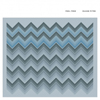 Pitre's latest composition is certainly an impressive and mesmerizing one, but it is quite a daunting challenge to find words to describe quite why it works so well.  Built around computer-randomized patterns of harmonics and fleshed out by a sextet of strings and dulcimer, Feel Free's beauty lies in its rippling, organic near-stasis: this is classical music blurred, stretched, and rendered in such a pointillist fashion as to seem like a languid, blissful, and formless haze.
Pitre's latest composition is certainly an impressive and mesmerizing one, but it is quite a daunting challenge to find words to describe quite why it works so well.  Built around computer-randomized patterns of harmonics and fleshed out by a sextet of strings and dulcimer, Feel Free's beauty lies in its rippling, organic near-stasis: this is classical music blurred, stretched, and rendered in such a pointillist fashion as to seem like a languid, blissful, and formless haze.
Basing a serious composition upon randomness and chance is certainly nothing new, as John Cage began taking direction from the I Ching as far back as the early '50s.  However, Feel Free might be the most listenable probability-based music that I have heard.  A lot of that certainly has to do the fact that this five-part piece is not purely steered by the vagaries of chance: the random harmonics all seem to fall within a single key and they are merely one part of a work that also contains composed and improvised motifs.  Still, those twinkling, unpredictable harmonics are the single most important part of Feel Free–their strange, unreliable rhythm and ever-shifting harmonies paradoxically provide the piece's only real framework, even if it is as fragile and space-filled as a spiderweb.
Such a gambit, obviously, is only possible when it is executed deftly and ingeniously and Pitre scores on both counts.  For one, despite being computer-randomized, the central harmonics were originally played by an actual person (Pitre) on a guitar and sound very natural–and quite pleasant too (harmonics are pretty inherently likable and chiming).  Conversely, the various violin, cello, harp, contrabass, and dulcimer parts played by Pitre's ensemble sound pretty random despite being played by actual people in real-time according to a score (except where Duane urged them to "feel free" to interact with or ignore their aural surroundings).  Not "random" in any jagged, cacophonous kind of way, mind you, but the amorphous, organic unfolding of plucks and swells feels naturally occurring rather than deliberate (though a number of non-traditional crescendos and confluences snuck up on me to keep it all dynamically absorbing).
While I certainly admire his stealth and fluidity as a composer, it is the blurring of computer and human (and the premeditated and the unexpected) into a single woozy, soft-focus middle ground that is Duane's real masterstroke, yielding a seamless, gently swaying tapestry of sublime, droning beauty.  In a way, Feel Free is a weirdly perfect piece of music: it is complexly textured and imbued with genuine, deep pathos (particularly in the violins), but it is so off-kilter, mysterious, and devoid of any strong melodic motifs that it can probably be endlessly looped without ever becoming boring.
Samples:
 
Read More


